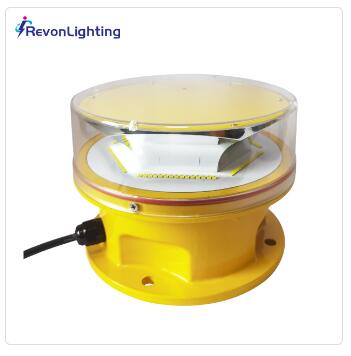Posted: 2024-06-16
Aviation lights are critical components of air navigation, ensuring safety and operational efficiency globally. The International Civil Aviation Organization (ICAO) establishes rigorous guidelines for aviation lights, encompassing various aspects essential for maintaining airspace safety and visibility. These guidelines are pivotal in standardizing practices across international boundaries, aiming to enhance the reliability and effectiveness of aviation light systems.
Importance of ICAO Guidelines
ICAO guidelines for aviation lights focus on standardizing the characteristics, installation, and maintenance of different types of lights used in aviation. These guidelines ensure consistent performance and visibility, crucial for pilot navigation and air traffic management. Key aspects covered include:
Types of Aviation Lights: ICAO categorizes lights based on their specific functions such as runway edge lights, approach lights, and obstruction lights. Each type is designed to provide distinct visual cues to pilots during various phases of flight.
Technical Specifications: Detailed specifications outline parameters such as light intensity, color, flash rate, and beam spread. These specifications ensure that lights are visible under diverse weather conditions and environments, aiding in safe navigation and obstacle avoidance.

Installation Requirements: Regulations specify precise installation requirements for lights at airports, heliports, and along air navigation routes. Proper installation is critical to ensuring optimal functionality and reliability, minimizing risks associated with inadequate visibility.
Maintenance Standards: Emphasis is placed on regular maintenance and inspection to uphold operational standards. Scheduled maintenance helps prevent failures and ensures lights are operational when needed, contributing to overall aviation safety.
Types of Aviation Lights
Aviation lights serve different purposes essential for safe flight operations:
Runway Lights: Essential for guiding aircraft during takeoff, landing, and taxiing operations. Includes runway edge lights, threshold lights, and centerline lights.
Approach Lighting Systems (ALS): ALS provides visual guidance to aircraft during the final approach phase, aiding pilots in aligning with the runway and establishing a safe descent path.
Taxiway Lights: Assist aircraft in navigating between runways, taxiways, and parking areas, minimizing runway incursions and enhancing ground movement safety.
Obstruction Lights: High-intensity lights installed on tall structures like communication towers and wind turbines to alert pilots of potential obstacles that could pose a hazard during flight.
| ICAO Guidelines for Aviation Light | low intensity |
| 44 | medium intensity |
| 45 | high intensity |
Technological Advancements
Advancements in lighting technology continue to improve the efficiency and reliability of aviation lights:
LED Technology: Adoption of Light Emitting Diodes (LEDs) has revolutionized aviation lights, offering benefits such as lower energy consumption, longer lifespan, instant activation, and better visibility in adverse weather conditions compared to traditional incandescent bulbs.
Monitoring and Control Systems: Modern aviation lights integrate advanced monitoring and control systems. These systems enable real-time monitoring, remote diagnostics, and automated maintenance alerts, ensuring prompt response to operational issues and minimizing downtime.
Compliance and Certification: Aviation lights undergo rigorous testing and certification processes to meet ICAO standards and regulatory requirements. Certification ensures lights meet performance criteria and are suitable for use in aviation environments.
Global Impact and Compliance
ICAO guidelines facilitate global harmonization of safety practices and promote seamless international air traffic operations. Compliance with these guidelines is mandatory for airports, heliports, and aviation facilities worldwide to uphold consistent safety standards and operational efficiency.
Future Trends and Challenges
Looking ahead, the aviation industry continues to innovate in aviation light technology to address emerging challenges such as sustainability and increased air traffic. Future trends may include the integration of smart lighting systems, enhanced energy efficiency measures, and advancements in remote monitoring capabilities.
Conclusion
In conclusion, ICAO Guidelines for Aviation Light are fundamental to ensuring the safety, efficiency, and reliability of global air transportation systems. By standardizing the characteristics, installation, and maintenance of aviation lights, these guidelines contribute to reducing the risk of accidents, improving visibility for pilots, and supporting effective air traffic management worldwide. As technology evolves and regulatory frameworks adapt, adherence to ICAO guidelines remains essential for safeguarding aviation operations and enhancing the safety of air travel for passengers and crew alike.